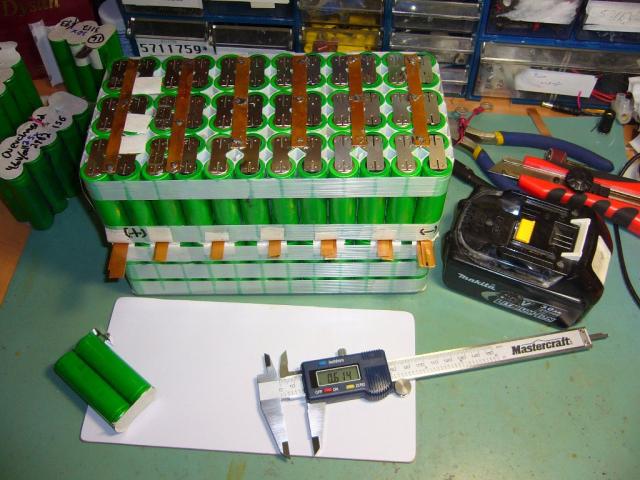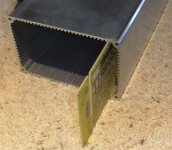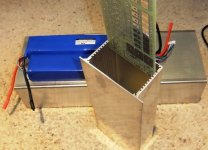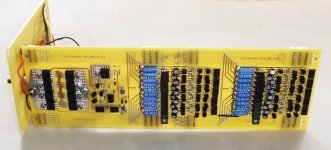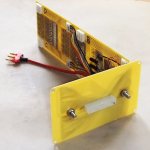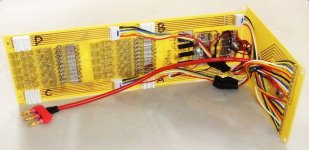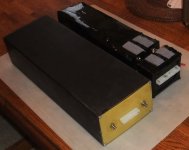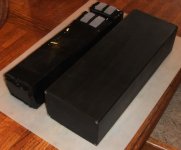MitchJi said:
Hi Gary,
A couple of 2005 GEM's have come up locally at reasonable prices, both with bad batteries.
The problems with the 2005's are:
- The controller is lame, fixed in mid 2006.
The charger is lame (Delta-Q V1), fixed at the beginning of 2006.
In your opinion if I purchase a 2005 with the intention of putting in a Lithium pack how big an issue is a lame OEM charger? Maybe the shortcomings wouldn't make any difference for a Lithium pack, which you might not know.
But would you even want to use the OEM charger with Lithiums?
How much would a good alternative cost (worst case is a $600 ride-4-fun "Super" unit)? I guess you'd recommend a Zephyr

and some meanwell's?
Actually, I think the charger might be just fine. The "lameness" might come from not being as clever in how they do the charge profiles, like the weird equalization phase mine has, that holds the current to 2A and lets the voltage rise to about 98-99V. I think this is unique to the gels, but in any case, all that is needed for a Lithium-based setup is a just a single standard CC/CV profile. I definitely think being able to make use of the existing OEM charger would be desirable. The BMS can be tweaked in order to match any of its weird profile features.
MitchJi said:
Also in 2005 GEM improved the steering and handling, and upgraded the brakes to disc's. GEM improved the steering geometry again 2007. Have you driven a 2005 or 2006 and if so how does the steering compare with your 2007?
I haven't driven anything but the 2007 model I have, so I don't have anything to compare to, but I will say having disc brakes is a good thing. I did get a very noticeable handling improvement, however, switching to 14" wheels and tires. It feels more like a small car now, rather than a golf cart that is about to be tipped over.

This is really apparent at 40+ mph, but I do notice a difference at slower speeds as well.
I don't know about the controllers either. From what I understand, the older ones might be easier to program, but I haven't tried this just yet on mine. I'd love to be able to get in and at least fix the speedometer function, so it reads right, and maybe bump up the current limit a bit. In any case, Ride-4-Fun can reprogram the ones earlier than mine, if you don't want to buy the kit from that link you provided before.
Which motor do these 2005 models have? There is the stock 4.5hp version, and then an upgraded version that is supposedly rated for 7hp. Ride-4-Fun claims the 7hp version can't really deliver this much power as it gets too hot, but frankly, I don't know. It might just be hype on their part, in order to keep selling their 7.5hp version, which is beefier, and has cooling fins, etc. I had the 7hp GEM version in mine, and I did replace it with the 7.5hp from Ride-4-Fun, but I never tested the stock 7hp version. Part of the reason was because I needed the motor in order to get the speed increase, because it came with a modified speed sensor. Knowing now that there is a programming option for my controller that might let me get the speed increase without changing the motor, and also getting that increase without screwing up the speed readout, I might not make the same decision about swapping the 7hp motor for the 7.5hp version from Ride-4-Fun.
I'm just finishing up building the BMS board for my new booster pack, which go in the box shown above. As I said, this one will be configured as 20s3p, or 15Ah. I hope to finish this up, and get the new pack tested and installed this weekend. After that, I will reconfigure my current pack into a 20s3p setup, and build a second one of these completed units. I might then add this reconfigured new one in parallel with the new booster pack, and see what kind of range increase I might get. Eventually, I could see adding four more of these 72V/15Ah packs, for a total of six, and replace the gels completely.

Anyway, I'll post some more progress pics soon.
-- Gary


